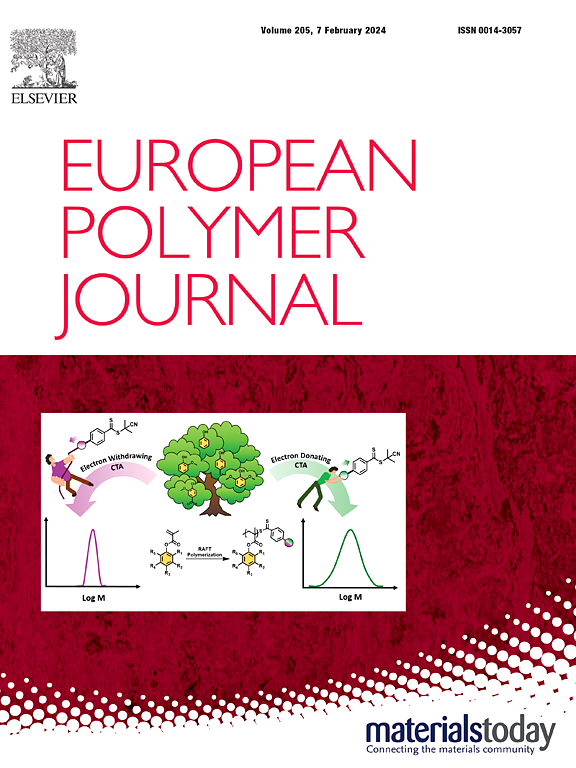Waste tire based thermoreversible elastomeric networks
IF 5.8
2区 化学
Q1 POLYMER SCIENCE
引用次数: 0
Abstract
The olefin metathesis is a powerful reaction to afford in one step polydienes (PD) depolymerization and furan end-chain functionalization using a furan allylic chain transfer agent (CTA). This degradation reaction proceeded successfully on waste tires to provide furan functionalized polymers that were used as secondary raw materials for elastomeric networks fabrication. To develop a circular economy approach, thermoreversible networks were prepared through the Diels−Alder (DA) chemistry by reaction of furan-f-PD and a tri-maleimide crosslinker. By heating networks starting polymers and crosslinker were recovered through a retro-Diels-Alder (r-DA) process without degradation. Same results were obtained after three DA/r-DA cycles. In addition, a total tire waste based elastomeric networks was successfully synthesized from the DA reaction of furan-f-PD issued from tire waste and a tire waste based maleimide crosslinker. They proved recyclable over three cycles.

求助全文
约1分钟内获得全文
求助全文
来源期刊

European Polymer Journal
化学-高分子科学
CiteScore
9.90
自引率
10.00%
发文量
691
审稿时长
23 days
期刊介绍:
European Polymer Journal is dedicated to publishing work on fundamental and applied polymer chemistry and macromolecular materials. The journal covers all aspects of polymer synthesis, including polymerization mechanisms and chemical functional transformations, with a focus on novel polymers and the relationships between molecular structure and polymer properties. In addition, we welcome submissions on bio-based or renewable polymers, stimuli-responsive systems and polymer bio-hybrids. European Polymer Journal also publishes research on the biomedical application of polymers, including drug delivery and regenerative medicine. The main scope is covered but not limited to the following core research areas:
Polymer synthesis and functionalization
• Novel synthetic routes for polymerization, functional modification, controlled/living polymerization and precision polymers.
Stimuli-responsive polymers
• Including shape memory and self-healing polymers.
Supramolecular polymers and self-assembly
• Molecular recognition and higher order polymer structures.
Renewable and sustainable polymers
• Bio-based, biodegradable and anti-microbial polymers and polymeric bio-nanocomposites.
Polymers at interfaces and surfaces
• Chemistry and engineering of surfaces with biological relevance, including patterning, antifouling polymers and polymers for membrane applications.
Biomedical applications and nanomedicine
• Polymers for regenerative medicine, drug delivery molecular release and gene therapy
The scope of European Polymer Journal no longer includes Polymer Physics.
 求助内容:
求助内容: 应助结果提醒方式:
应助结果提醒方式:


